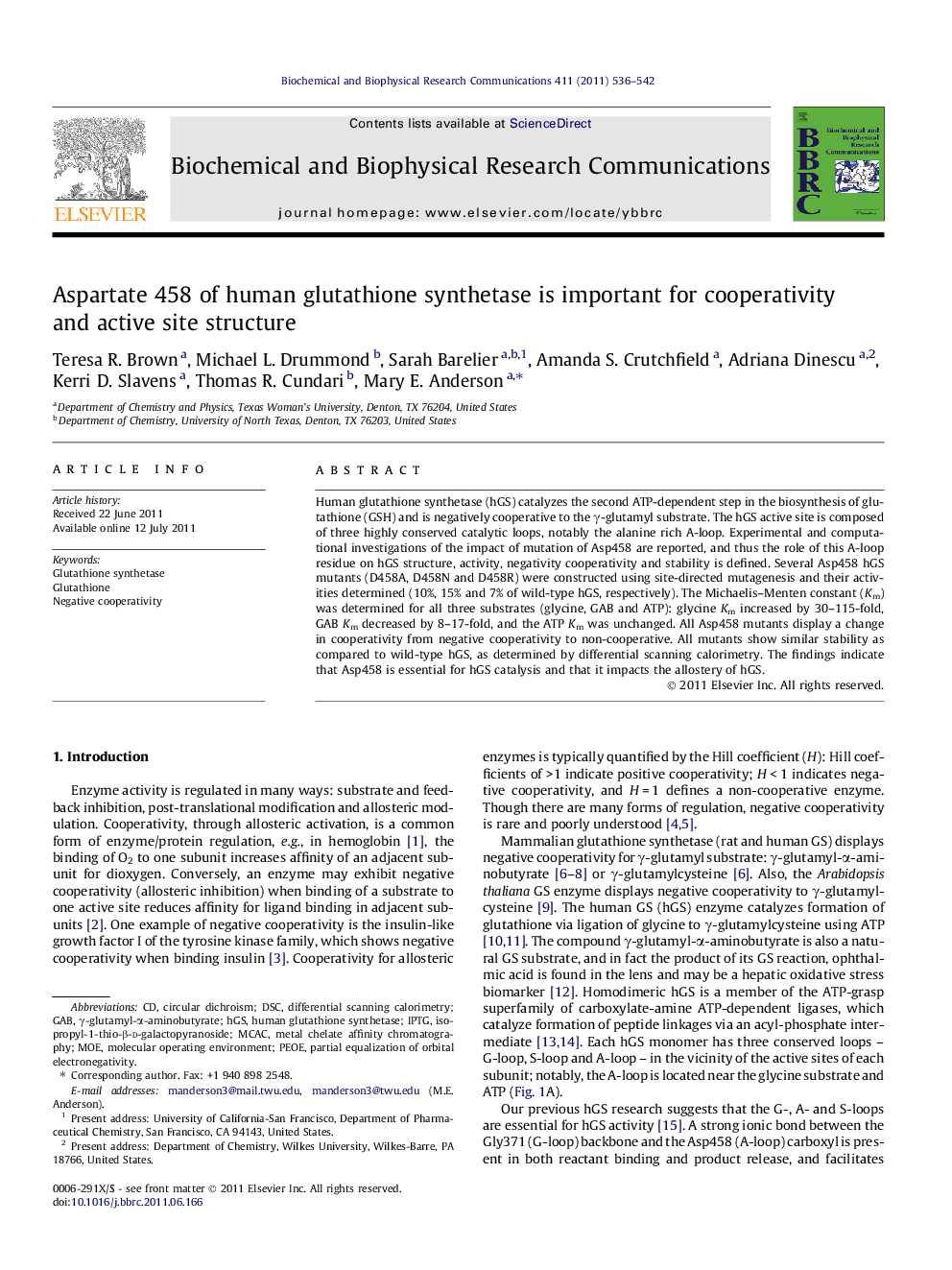| Article ID | Journal | Published Year | Pages | File Type |
|---|---|---|---|---|
| 1930408 | Biochemical and Biophysical Research Communications | 2011 | 7 Pages |
Human glutathione synthetase (hGS) catalyzes the second ATP-dependent step in the biosynthesis of glutathione (GSH) and is negatively cooperative to the γ-glutamyl substrate. The hGS active site is composed of three highly conserved catalytic loops, notably the alanine rich A-loop. Experimental and computational investigations of the impact of mutation of Asp458 are reported, and thus the role of this A-loop residue on hGS structure, activity, negativity cooperativity and stability is defined. Several Asp458 hGS mutants (D458A, D458N and D458R) were constructed using site-directed mutagenesis and their activities determined (10%, 15% and 7% of wild-type hGS, respectively). The Michaelis–Menten constant (Km) was determined for all three substrates (glycine, GAB and ATP): glycine Km increased by 30–115-fold, GAB Km decreased by 8–17-fold, and the ATP Km was unchanged. All Asp458 mutants display a change in cooperativity from negative cooperativity to non-cooperative. All mutants show similar stability as compared to wild-type hGS, as determined by differential scanning calorimetry. The findings indicate that Asp458 is essential for hGS catalysis and that it impacts the allostery of hGS.
► Mutations of Asp458 to alanine, asparagine and arginine have a large impact on human glutathione synthetase (hGS) activity. ► The affinities of GAB and glycine substrates are different in Asp458 mutant hGS. ► Mutations at Asp458 impact the allosteric pathway of hGS causing a loss of cooperativity. ► Asp458Asn (D458N) exhibits an increase in activity and glycine affinity after prolonged storage. ► Asp458 mutant enzymes show no loss in thermal stability and secondary structure is unaffected.
